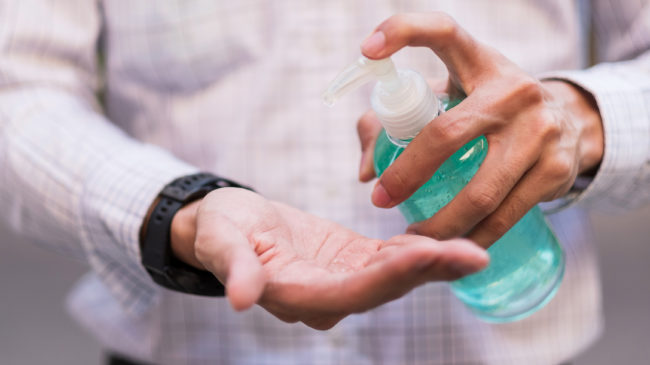While washing one’s hands with soap and water is one of the most effective means of stopping the spread of the COVID-19 virus, alcohol-based hand sanitizers can be a sufficient substitute when soap and water aren’t available or within reach. Because of the high demand for prepackaged sanitizers during the coronavirus pandemic, grocery stores, and even hospitals, are experiencing shortages of alcohol-based sanitizers.
We have seen distilleries and breweries step up to help fill some of the void created by the surge in demand, but the sparse availability is leading individuals to seek alternatives, including making one’s own hand sanitizer.
Unfortunately, many states prohibit the sale of grain alcohol in concentrations high enough for homemade alcohol-based hand sanitizers to be effective. Americans typically have access to three types of alcohol, but only two—ethanol (consumable alcohol) and isopropyl (rubbing alcohol)—have been shown by the Centers for Disease Control and Prevention (CDC) to be effective disinfectants.
To be of use, a homemade sanitizing solution’s alcohol concentration needs to range from 60 to 80 percent alcohol by volume (ABV). If higher, the alcohol works to coagulate, not destroy, the envelope that surrounds coronaviruses. On its own alcohol will quickly evaporate and makes it difficult to effectively sanitize one’s hands. Because of this, hand sanitizing solutions include thickening moisturizing gels and oils, which in turn dilutes the alcohol concentration, and thus, the potency, of the resulting sanitizing solution.
Various recipes recommend a two-thirds alcohol, one-third aloe gel (or other moisturizers) ratio for making one’s own hand sanitizing solution. Therefore, in order to reach the recommended 60 to 80 percent ABV solution needed to be an effective disinfectant, the original alcohol source must be 90 percent alcohol or greater.
While 90 percent ABV or higher isopropyl alcohol, or rubbing alcohol, is easy to locate in non-pandemic times, finding 90 percent ABV or higher ethanol alcohol can be much more difficult, as many states cap the potency of distilled spirits available to their citizens. Doing so effectively prohibits citizens from making their own ethanol-based hand sanitizer.
Seventeen states, with a combined population of roughly 150 million, ban the sale of alcohol with ethanol concentrations high enough to make effective homemade hand sanitizers. Several states with the ban are 
Although Virginia recently raised its cap for citizen purchase to 151 proof, or 75.5 percent ABV, the increase still does not help individuals looking to make their own effective sanitizing solution during this pandemic.
Hopefully, the drastic changes individuals and organizations are undergoing will make high-concentration alcohol bans irrelevant in containing the pandemic. But with many governments already suspending regulations related to diagnostic tests, occupational licenses, and even alcohol delivery to fight COVID-19, why should state governments continue to deny Americans a substance that can be valuable in helping prevent the pandemic’s spread?
The widespread availability of pure grain alcohol for all Americans should have come with the repeal of prohibition over a century ago. Instead, not only does Prohibition persist, but nearly half the U.S. adult population cannot access an effective sanitizing agent that can substitute for products that are in very high demand for the foreseeable future.

